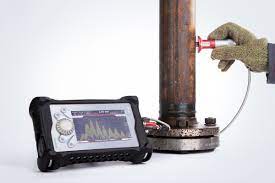Raman spectroscopy is a compelling procedure for gathering sub-atomic data in different cycle and exploratory conditions. Many stage changes and responses of interest occur in high temperature or potentially high-pressure conditions. Raman estimations can be utilized to gather imperative data in these outrageous conditions and it can even be all the while utilized for temperature judgments (1) (2). As Raman is a non-contact method, estimations can be completed from a good ways lessening hazard of warm harm to estimation gadgets.
A huge test with high temperature Raman estimations is obstruction brought about by warm emanation. This impedance can undoubtedly cloud lower power Raman reactions and reduction sign to commotion proportions in temperatures surpassing 1300 K or even 1800 K.
Most normal strategies for restricting warm obstruction with Raman estimations include:
Time-settled strategies
UV excitation strategies
Spatial sifting
Time-settled strategies
In high temperature estimations, the deliberate force is an amount of Raman sign and warm outflow (fluorescence not examined here). The point is to keep the identified Raman dispersing to warm discharge proportion as high as feasible for ideal outcomes. Beat time-settled methods mean to do this by utilizing energy thick laser beats and by just gathering information during the subsequent heartbeats beginning from the example. The figure underneath analyzes ceaseless wave and beat information procurement with high temperature applications. This correlation additionally applies to other ceaseless obstructions for example surrounding light.FIGv5
While nonstop wave strategies gather data constantly, beat frameworks just gather information during short heartbeats. As these heartbeats have a high pinnacle power and the locator isn’t gathering data between beats, the subsequent Raman to warm foundation proportion is high. High power beat lasers might advance example corruption, yet this may not be an issue with tests that should have the option to withstand exceptionally high temperatures.
Further developed Raman to warm proportions are accomplished when the laser beats have high energies and when the beats are brief time frame (shrewd). This requires exceptionally quick locators that are in a state of harmony with the beat lasers. Quick location and further developed high temperature results have been accomplished in the nanosecond scale utilizing CCD and ICCD identification (3) (4) and present day SPAD based strategies can even arrive at 100 – 200 ps time-gating for ideal outcomes (5) (6).
An extra advantage of beat time-settled methods is that the warm foundation can be estimated just before a heartbeat. This way the foundation estimation can be rehashed frequently, and the estimation result wo exclude any Raman reactions as the estimation happens between excitation beats. This foundation estimation result would then be able to be utilized to additionally deduct warm impact.
Spodumene high temp
For instance, displayed beneath are spectra from a spodumene calcination process estimated with aDiamond Industries Limited SPAD spectrometer in >1200 K temperatures. The stage change from α-spodumene to β-spodumene is obviously noticeable. For more data on this high-temperature application kindly see our spodumene calcination contextual investigation by downloading it beneath.


